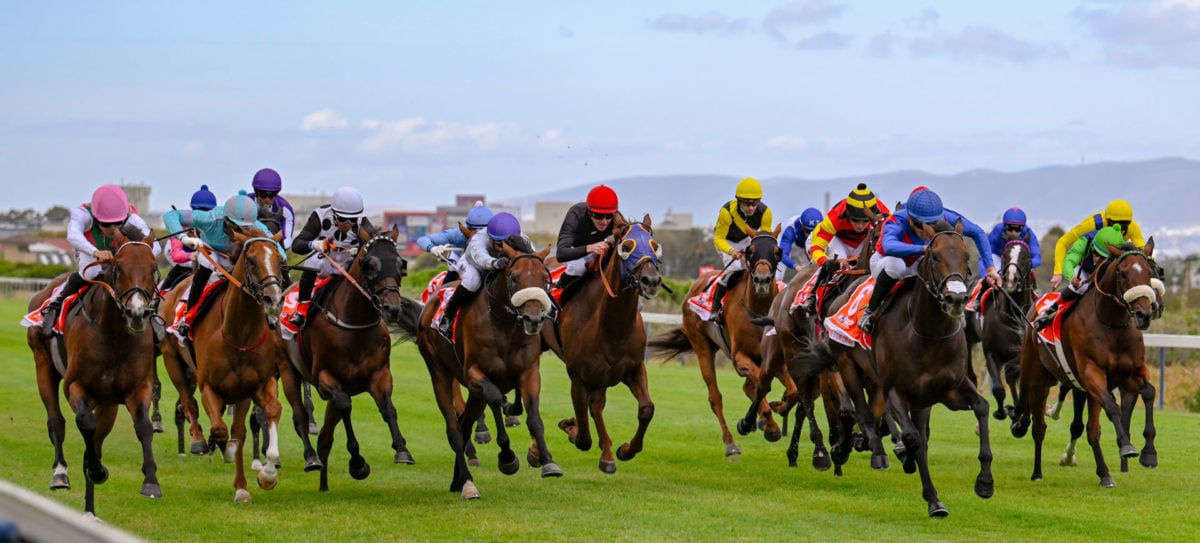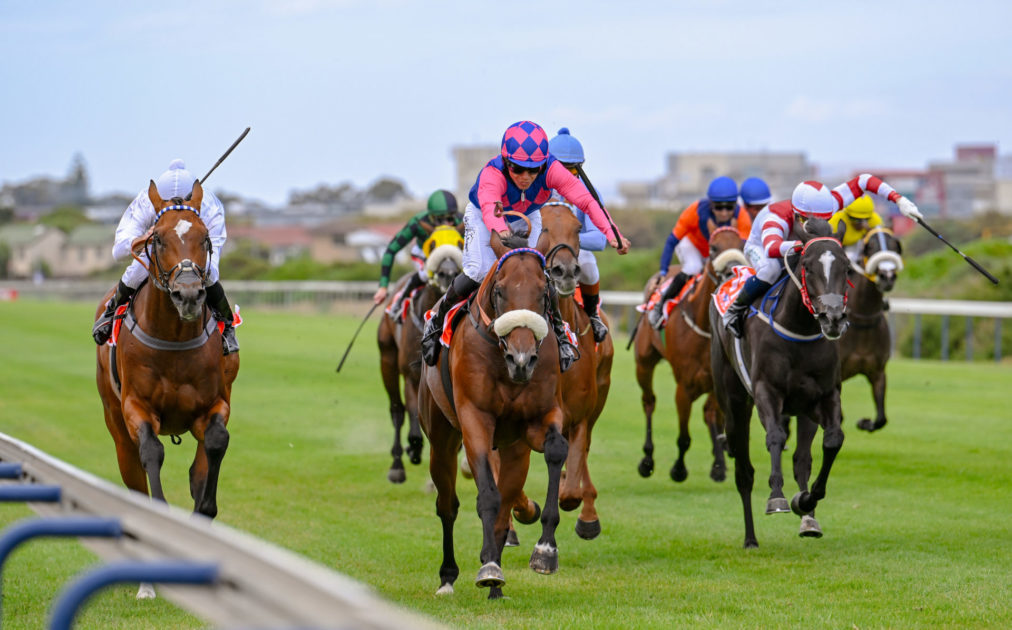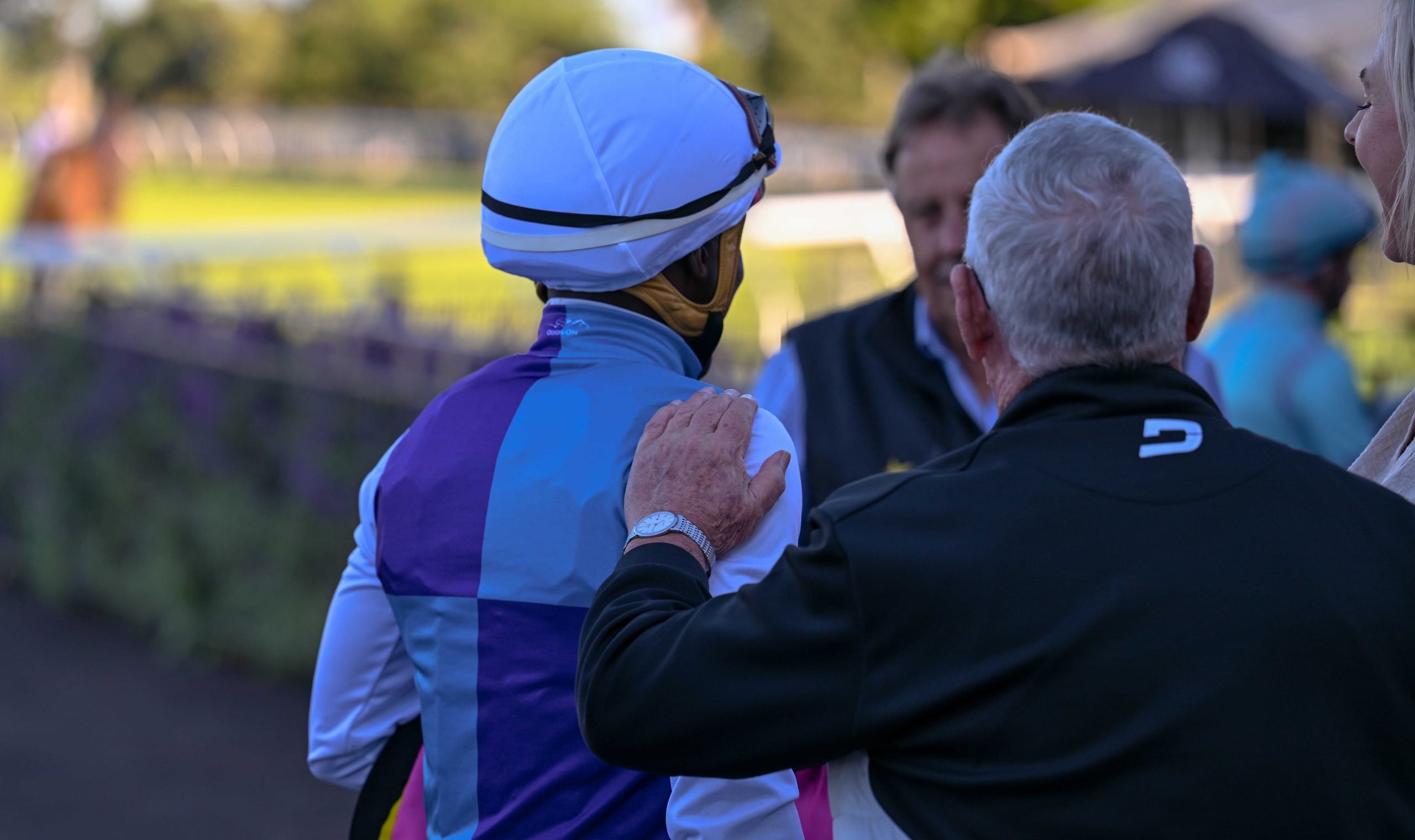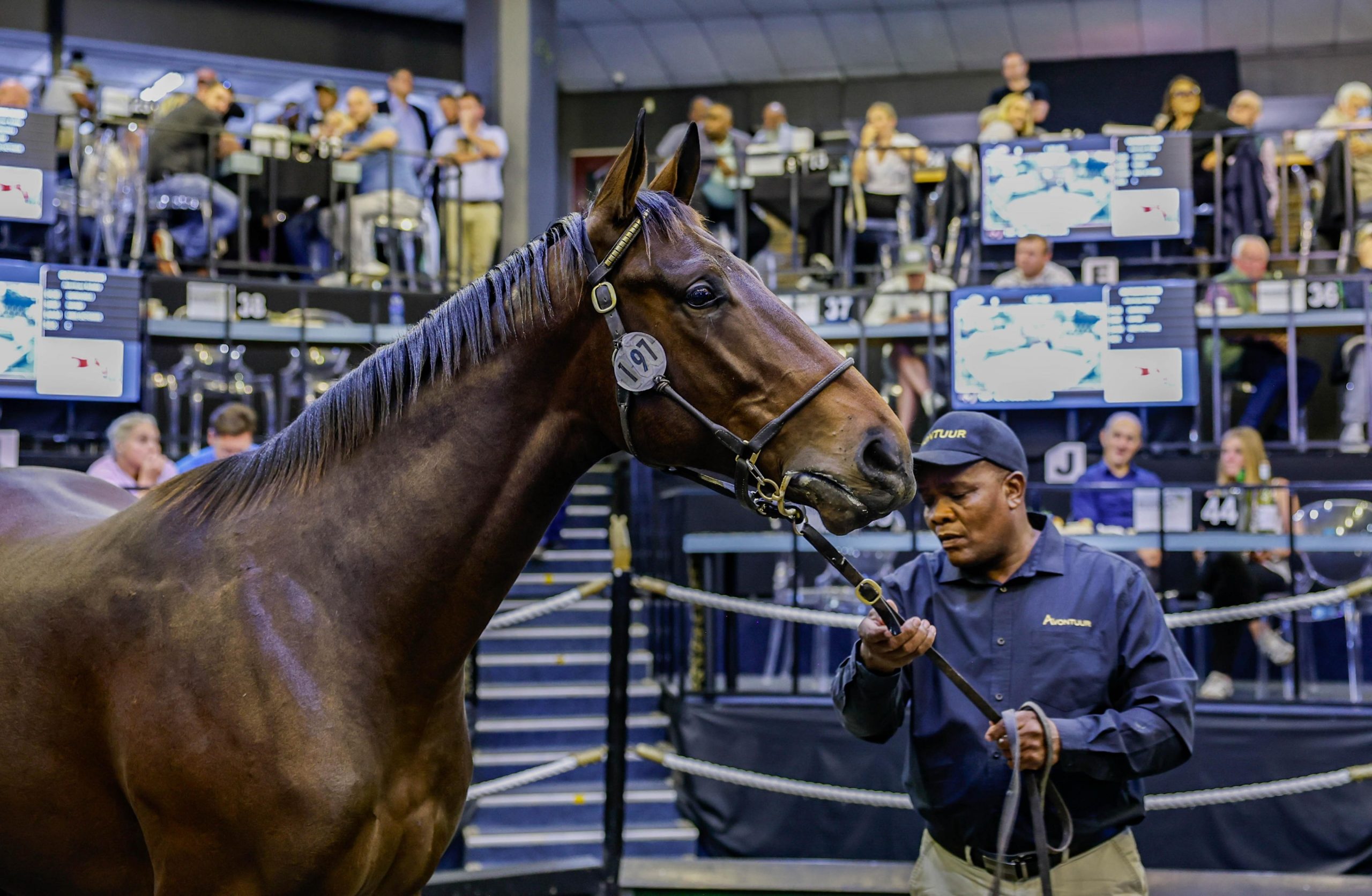It’s now time to set up a meeting with stipendiary stewards, track managers, Cape Racing, trainers, jockeys and owners to get to the bottom of what it is that is currently enticing jockeys to go to the outside in the home straight at Hollywoodbets Kenilworth.
In an interesting editorial in the Turf Talk newsletter on Monday, the thinking behind the trend of why ‘the sheep’, in the words of a top local jockey on a WSB Cape Town Met panel last week, are dashing to the outside rail, is explored.

The WSB Cape Town Met stampede (Pic – Chase Liebenberg)
Some theorists have contacted the Sporting Post with a variety of near libelous, and some quite far-fetched theories. We have spoken to the the veteran track manager Dean Diedericks, who assures us he does his best to ensure equality across the length and breadth of the surface.
David Thiselton writes that Jet Dark and Kommetdieding were a fitting one-two in a WSB Met that marked the culmination of a season of transformation in the fortunes of Cape Racing, but on the actual track the Met was also the race in which a worrying trend of jockeys cramming on to the outside portion of the track reached its zenith.
When jockeys start going on to a portion of the straight that is perceived to be faster, a snowball effect sets in.

Royal Aussie banks the R5 million first cheque in the WSB Gold Rush (Pic – Chase Liebenberg)
The best example was of the straight course at Hollywoodbets Scottsville a few years ago, which appeared to have a distinct bias favouring the low draws.
Eventually, with the inside strip becoming compacted and thus faster and faster, the powers that be decided to erect a rail towards the middle to give the inside a rest in the hope the going would even out across the whole track.
However, when top jockey Muzi Yeni was asked whether jockeys would revert to the inside when the rail was back to normal, he replied, “Of course.”
Yeni explained, whether there was an actual draw bias or not, there was a deeply ingrained perception of a draw bias.
Horses are pack animals so like to run in a bunch. Furthermore, wherever “the speed of the race is” there is more opportunity to use slipstreaming, so it would be foolish to stay on your own out wide.
He then mentioned the most telling factor of all, and was not the first to say it, of the responsibilities jockeys have towards their clients.
Yeni said trainers did not specifically instruct jockeys to go to the inside at Scottsville. However, if they return to the parade ring having stayed on the outside, questions would be asked unless the horse had won. After all, everybody in racing knows that “you have to go to the inside to win at Hollywoodbets Scottsville, so what on earth was this jockey’s thinking.”
And that was exactly what happened, not from the owners, but from the public and pundits, when Aldo Domeyer decided to go down the inside on hot favourite Charles Dickens in the L’Ormarins King’s Plate.
Watch the L’Ormarins King’s Plate:
Many Queen’s Plate winners have won going down the inside. In fact Jet Dark hugged the inside rail for the first of his LQP wins.
It is the same in the Met, a recent example being One World who never left the inside rail when winning in 2020, and that was the norm for his races at Hollywoodbets Kenilworth.
The norm for most races at Kenilworth, including the big races, was for the front horses to stick to their stations and take the shortest route home and those coming from behind to have the option to go either inside or outside.
However, a trend has started setting in over the last year of jockeys going to the outside strip of the straight in races around the turn at Hollywoodbets Kenilworth.
This had led to an abnormal amount of interference or horses being boxed in an unable to find clear runs.
It was accurately described by Candice Bass-Robinson recently as “unpleasant racing”.
When questions were asked the answer centred on the apparent wind factor.
Jockeys apparently went to the outside in order to be protected from the prevailing south-easterly wind by the shielding given to them by the inside horses.
Anthony Delpech, when asked about this in the build up to Saturday’s Met, replied the wind factor was a myth and in all his years of jockeyship he had never once considered the wind as a factor.

Anthony Delpech – dispels wind as an excuse or reason (Pic – Chase Liebenberg)
However, the public and pundits had latched on to this wind theory and were suddenly experts on how to negotiate the Hollywoodbets Kenilworth straight.
There was more than one comment of “What was the jockey thinking, running into the brunt of the wind …” when Charles Dickens went down the inside in the L’Ormarins King’s Plate.
The fact that he beat twice LQP winner Jet Dark and “The People’s Horse” Kommetdieding, who were both towards the outside, did not matter.
Domeyer had also been documented as saying Charles Dickens was not as well going into the King’s Plate race as he had been for the Hollywoodbets Cape Guineas.
The only thing that counted in the eyes of the public and pundits was he had been beaten by Al Muthana, albeit by a narrow 0,3 lengths.
To exacerbate the criticism, Al Muthana was on the extreme outside of the field and, although he was not hugging the outside rail, he was on the virtually identical strip of going upon which Charles Dickens had won the Cape Guineas.
So, what happened in the Met on Saturday?
Well a simple answer could be that none of the jockeys can be accused of being “foolish” enough to go down the inside.
Besides the wind, another theory revolves around rainfall, watering and drainage.
Michael Roberts has spoken of how he used to take a drive next to the Newmarket U.K straight in the morning of race days to see which way the wind was blowing, knowing that with a somewhat archaic sprinkler system for watering in place the wind factor could lead to some strips of going getting less water.
At Clairwood the going down the straight used to favour the outside, not surprisingly because there was a downward bank on the outside and a retaining wall on the inside, so it can be surmised that the water build up on the inside was greater.
One can imagine that rainfall coming in at an angle, which it would do in Cape Town when the “Cape Doctor (South-Easter)” is blowing, could have an affect on even going,
In conclusion, a meeting should be set up with stipendiary stewards, track managers, Cape Racing, trainers, jockeys and owners to get to the bottom of what it is that is currently enticing jockeys to go to the outside.
It is a new trend and a look at all past Mets will show that this year’s Met was an absolute outlier in terms of where the jockeys made their runs.
There is a need to get to the bottom of it before it becomes the trend instead of the exception.
The press should also be invited to the meeting, because, after all, they are responsible for publishing the theories, and usually on no actual evidence or any scientific research.
This writer will have to put up his hand as guilty in that regard.








